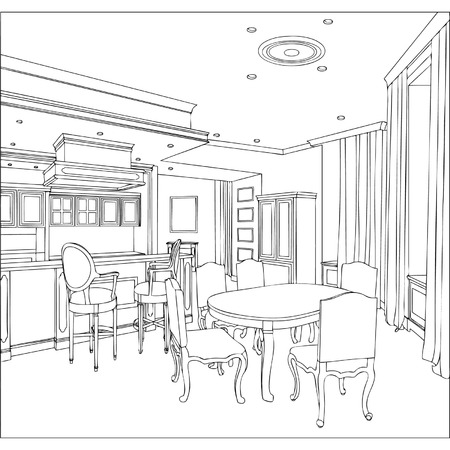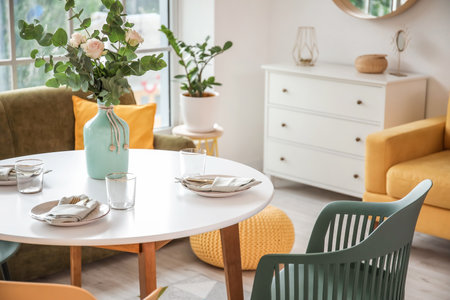1. Understanding the Appeal of Kitchen Extensions in the UK
In recent years, kitchen extensions have become a defining feature of British home improvement, and it’s easy to see why. As lifestyles evolve and families seek more functional living spaces, the traditional closed-off kitchens of older UK properties no longer fit the bill. Open-plan living is now highly sought after, with homeowners desiring seamless transitions between their cooking, dining, and entertaining areas. This shift not only enhances day-to-day living but also fosters stronger family connections and makes hosting guests far easier. Moreover, a thoughtfully designed kitchen extension can dramatically increase a property’s value—often representing one of the most reliable ways to add equity in the competitive British housing market. Whether it’s creating space for a growing family or simply bringing in more natural light, kitchen extensions offer both practical benefits and a significant return on investment, making them an attractive prospect for homeowners across the country.
Planning Permission and Building Regulations
Before embarking on a kitchen extension project in the UK, it is crucial to understand the planning permission process and building regulations that apply. Navigating these rules not only ensures legal compliance but also helps avoid costly delays or modifications down the line. Below, we provide a practical overview tailored for British homeowners keen to enhance their kitchen space.
Permitted Development Rights
Many kitchen extensions can be constructed under Permitted Development (PD) rights, which allow certain works without the need for full planning permission. However, PD rights have strict limits and conditions relating to size, height, location, and materials. It is important to check whether your property qualifies, as homes in conservation areas, listed buildings, or flats may have restrictions.
Main Permitted Development Criteria for Kitchen Extensions
| Criteria | Single-storey Rear Extension | Side Extension |
|---|---|---|
| Maximum Depth (Detached) | 8 metres | Up to half the width of the original house |
| Maximum Depth (Other Houses) | 6 metres | Up to half the width of the original house |
| Maximum Height | 4 metres | 4 metres |
| Materials Used | Must be similar in appearance to existing house | |
| Proximity to Boundaries | Eaves within 2 metres of boundary must not exceed 3 metres in height | |
| No Extension Forward of Principal Elevation | Applies to both rear and side extensions under PD rights | |
If your proposed extension exceeds these limits or falls outside permitted development criteria, you will need to submit a planning application to your local council.
Building Regulations Approval
Regardless of whether planning permission is required, all kitchen extensions must comply with UK Building Regulations. These set standards for structural integrity, fire safety, insulation, ventilation, drainage, and electrical works. You must either use a council-approved inspector or an independent building control body to oversee the work and issue certification upon completion.
Key Areas Covered by Building Regulations:
- Foundations and structural support
- Damp-proofing and moisture control
- Energy efficiency (insulation and glazing)
- Fire escape routes and alarms
- Electrical safety standards (Part P)
- Plumbing and drainage systems
- Ventilation requirements for kitchens and utility spaces
Notifying Your Local Council
If you’re unsure whether your planned extension needs formal approval, it’s advisable to contact your local planning authority early in the process. Some councils offer pre-application advice services or you can apply for a Lawful Development Certificate as proof that your project meets permitted development criteria.
This approach will help you avoid unexpected issues and ensure your new kitchen extension is both compliant and ready to add value to your British home.

3. Design Ideas that Suit British Properties
When it comes to kitchen extension ideas for British homes, the key is to balance inspiration with practicality. Here are some popular design concepts that both maximise space and respect the distinctive character of UK properties.
Side Return Extensions
Side return extensions are particularly well-suited to Victorian and Edwardian terraced houses, which often have a narrow, unused alley running alongside the kitchen. By building into this side return, you can create a wider, brighter kitchen-diner without significantly impacting your outdoor space. These extensions typically allow for larger windows or skylights, flooding the heart of your home with natural light and improving the overall flow between rooms.
Rear Extensions
A rear extension is one of the most straightforward ways to add significant square footage to your kitchen, making it an ideal solution for semi-detached and detached British homes. Whether opting for a traditional brick-built addition or something more contemporary with bi-fold doors and roof lanterns, rear extensions can help connect your kitchen to the garden — perfect for summer entertaining and everyday family living. The key is to select materials and finishes that complement your homes existing style, ensuring the new space feels like a seamless part of your property.
Wraparound (L-Shaped) Extensions
For those seeking maximum impact, a wraparound or L-shaped extension combines both side return and rear additions. This configuration is especially effective in period properties where internal layouts are often restrictive. With thoughtful planning, you can carve out distinct zones for cooking, dining, and relaxing while maintaining an open-plan feel. Consider incorporating Crittall-style doors or exposed brickwork for a nod to classic British aesthetics while keeping the space modern and functional.
Blending Old and New
No matter which extension type you choose, successful projects pay close attention to detail — from matching brickwork on period homes to choosing sympathetic colours and fixtures in newer builds. Incorporating features such as shaker cabinetry or heritage tiles helps bridge the gap between traditional and contemporary styles, delivering a kitchen extension that feels truly at home in its British context.
4. Optimising Light and Space
When planning a kitchen extension in a British home, making the most of natural light and creating an open, airy atmosphere is crucial to achieving both functionality and visual appeal. Traditional UK properties can often feel enclosed, so implementing modern features that invite daylight and foster a sense of spaciousness has become increasingly popular among homeowners seeking to add value and comfort.
Maximising Natural Light
One of the most effective ways to brighten up your new space is by incorporating skylights or roof lanterns. These elements allow sunlight to flood the kitchen throughout the day, reducing the need for artificial lighting and creating a welcoming environment even during those classic overcast British afternoons. The use of bifold or sliding doors leading out to the garden is also a game-changer. Not only do they provide wide, uninterrupted views of the outdoors, but they also seamlessly connect indoor and outdoor living areas—a growing trend in UK home design.
Open Plan Layouts
Open layouts are particularly well-suited to kitchen extensions, as they remove unnecessary walls and barriers, promoting a free flow between cooking, dining, and relaxing spaces. This approach not only enhances sociability within the home but also makes even compact extensions feel much larger than their actual footprint. Combined with clever storage solutions—such as built-in cabinetry or island units—open plans help maintain a clutter-free aesthetic while maximising usable space.
Feature Comparison Table
| Feature | Main Benefit | Typical Use in UK Homes |
|---|---|---|
| Skylights/Roof Lanterns | Increase daylight; reduce electricity usage | Pitched roof extensions; period property upgrades |
| Bifold/Sliding Doors | Create seamless indoor-outdoor connection | Kitchen-diner/garden access; modern builds |
| Open Layouts | Enhance sense of space; improve social interaction | Victorian terrace reconfigurations; new builds |
Final Thoughts on Light and Space Optimisation
Carefully considering how to optimise light and space will ensure your kitchen extension adds tangible value—not just in monetary terms but also in quality of life. Thoughtful integration of these design features can transform an ordinary extension into the heart of your home, perfectly attuned to British tastes and lifestyles.
5. Blending Old with New: Materials and Finishes
One of the most rewarding aspects of a kitchen extension in British homes is achieving a seamless blend between the original architecture and the new addition. The careful selection of materials and finishes plays a pivotal role in this process, helping to ensure that your extension feels like a natural part of the property rather than an afterthought.
Matching Traditional Features
A common approach is to echo existing architectural details. This could mean sourcing bricks that closely match the original façade—a particularly important consideration for period properties or homes in conservation areas. Reclaimed brickwork, lime mortar pointing, and stone lintels can all help preserve that sense of continuity. In terms of windows, opting for timber sash or casement styles will complement Victorian or Edwardian homes beautifully, while painted wooden frames maintain a classic aesthetic.
Contemporary Contrasts
Alternatively, some homeowners embrace contrast as a way to celebrate both old and new. Modern extensions often feature crisp render, steel-framed glazing, or Crittall-style doors, setting them apart from the existing structure without clashing. When executed thoughtfully, these contrasts can highlight the charm of the original building while bringing in abundant light and a fresh sense of space.
Unifying Elements
Regardless of style, it’s wise to introduce unifying elements—such as rooflines, colour palettes, or repeating materials—that visually tie the extension back to the main house. For instance, continuing floor finishes from the old kitchen into the new space helps create flow, while brick slips or heritage paint colours on new walls can provide subtle nods to tradition.
Practical Considerations
Finally, don’t overlook practicalities unique to British homes: planning regulations may dictate certain materials or window proportions, especially in listed properties. Engaging with local architects or builders familiar with your area’s character ensures that both aesthetics and compliance are taken into account, resulting in an extension that adds genuine value and appeal.
6. Enhancing Value and Everyday Living
Kitchen extensions are not just about adding square footage—they’re a strategic investment in both property value and your daily comfort. By focusing on practical improvements, you can create a kitchen that works harder for your household while also appealing to future buyers.
Boosting Property Value with Thoughtful Design
In the UK, well-designed kitchen extensions consistently add value to homes. To maximise return, ensure your extension blends seamlessly with the existing architecture and maintains energy efficiency standards. Open-plan layouts remain highly desirable, particularly when they allow natural light to flood in through bi-fold doors or skylights. Using quality materials and finishes will also help your new space stand out in the competitive British property market.
Improving Day-to-Day Living
A successful kitchen extension should make everyday life easier and more enjoyable. Consider how you move through the space and what activities take place—from morning coffees to family dinners. Islands with built-in seating or breakfast bars can serve as social hubs, while clearly defined zones for cooking, dining, and relaxing help maintain order even in busy households.
Utility Areas for Modern Lifestyles
Don’t overlook the value of utility spaces. A discreet utility room or a laundry nook can declutter the main kitchen area, keeping appliances and chores out of sight. If space allows, incorporate a boot room by the back door—a uniquely British solution for muddy shoes and pets after a walk on rainy days.
Clever Storage Solutions
Maximising storage is key to keeping your kitchen extension functional and tidy. Think beyond standard cupboards: floor-to-ceiling cabinetry, pull-out larders, deep drawers, and integrated recycling bins all help optimise every inch. Bespoke shelving or alcoves can make use of awkward corners, giving you extra space without compromising style.
Multi-Functional Spaces for Flexible Living
Modern British homes benefit from rooms that adapt to changing needs. Consider including a workstation for remote working or homework within your extension—perhaps concealed behind pocket doors or folding screens when not in use. With thoughtful planning, your kitchen extension can evolve alongside your family’s lifestyle, making it a long-term asset both practically and financially.


